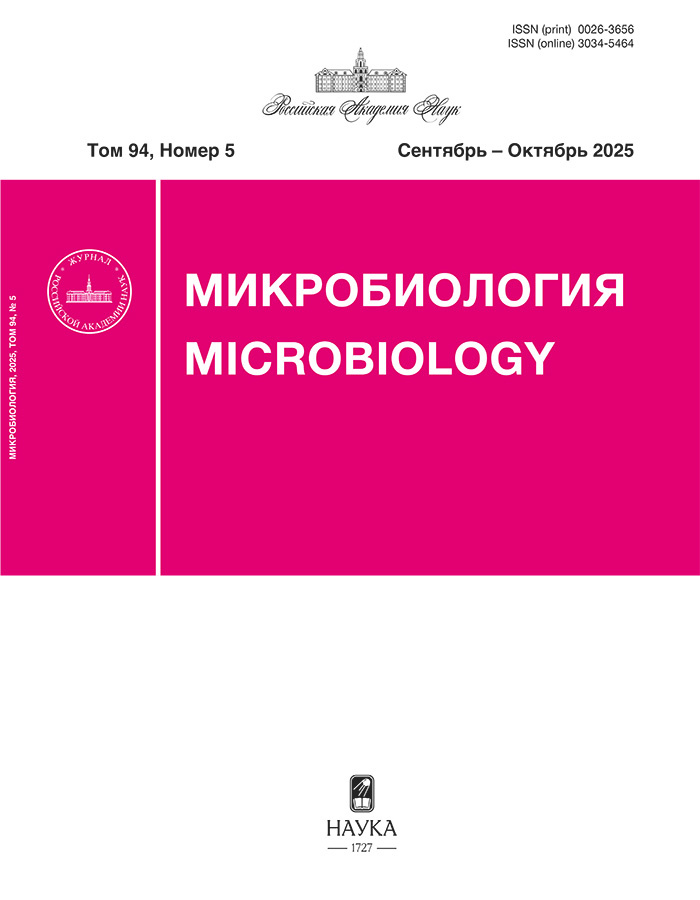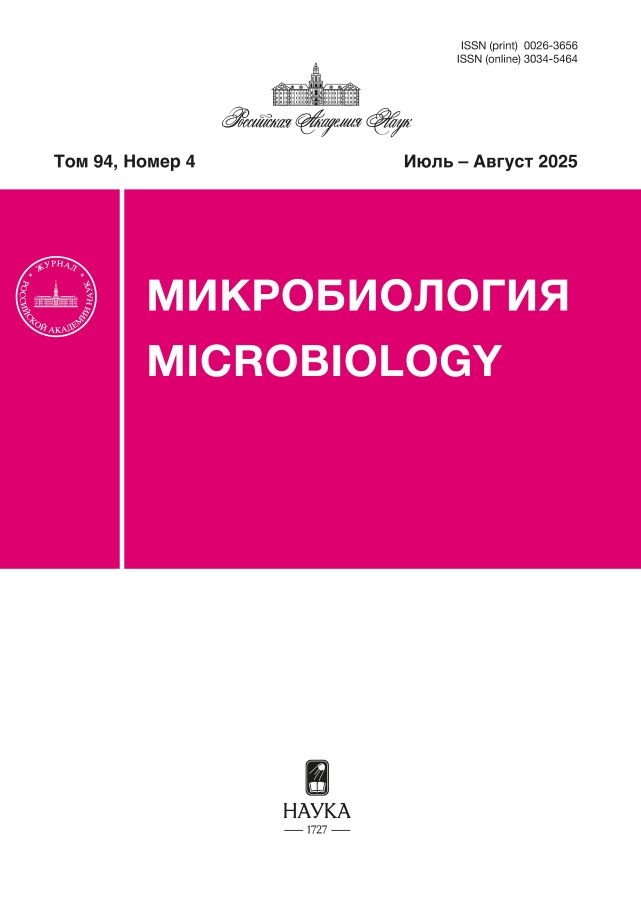Оценка эффективности криоконсервации микроводорослей и цианобактерий на примере штаммов из Всероссийской коллекции микроорганизмов
- Авторы: Редькина В.В.1, Темралеева А.Д.1
-
Учреждения:
- ФИЦ ПНЦБИ РАН
- Выпуск: Том 94, № 4 (2025)
- Страницы: 330-340
- Раздел: ЭКСПЕРИМЕНТАЛЬНЫЕ СТАТЬИ
- URL: https://cijournal.ru/0026-3656/article/view/686844
- DOI: https://doi.org/10.31857/S0026365625040029
- ID: 686844
Цитировать
Полный текст
Аннотация
Проведена оценка эффективности криоконсервации цианобактерий и микроводорослей разных таксономических групп, включая харофитовые, хлорофитовые и гетероконтофитовые микроводоросли, на примере 24 штаммов альгологической части фонда Всероссийской коллекции микроорганизмов (ВКМ). Для сравнительного исследования были отобраны культуры микроводорослей, отличающихся клеточными размерами, морфологической организацией таллома, способом размножения, наличием и размером слизистых оболочек, способностью к образованию покоящихся клеток. Апробированы два варианта криопротекторов (метанол и диметилсульфоксид), два типа питательных сред (скошенный агар и жидкая среда), а также три способа определения выживаемости организмов после криоконсервации. Показано, что двуступенчатый протокол криоконсервации с использованием обоих криопротекторов (метанол и диметилсульфоксид) был успешно применен для всех 24 исследованных штаммов вне зависимости от их таксономической принадлежности и морфологических признаков. По итогам эксперимента была разработана стандартная операционная процедура криоконсервации микроводорослей и цианобактерий, включающая жидкую культуральную среду с диметилсульфоксидом, а также одновременно два способа определения выживаемости штаммов после криоконсервации – рост в жидкой среде и штрихи на агаре. Предложенный протокол обеспечивает не только сохранение жизнеспособности клеток и возможности дальнейшего использования штамма в качестве морфологически и генетически репрезентативного образца, но и минимизирует временные и ресурсные затраты, а также риск контаминации культур.
Ключевые слова
Полный текст
Об авторах
В. В. Редькина
ФИЦ ПНЦБИ РАН
Автор, ответственный за переписку.
Email: kalmykova_v_v@mail.ru
Всероссийская коллекция микроорганизмов (ВКМ), Институт биохимии и физиологии микроорганизмов им. Г.К. Скрябина РАН
Россия, 142290, ПущиноА. Д. Темралеева
ФИЦ ПНЦБИ РАН
Email: kalmykova_v_v@mail.ru
Всероссийская коллекция микроорганизмов (ВКМ), Институт биохимии и физиологии микроорганизмов им. Г.К. Скрябина РАН
Россия, 142290, ПущиноСписок литературы
- Beaty M.H. Cryopreservation of eukaryote algae. Master of Science in Biology thesis. Blacksburg, Virginia: Virginia Polytechnic Institute and State University, 1991. 116 p.
- Cameron R. E. Species of Nostoc vaucher occurring in the Sonoran Desert in Arizona // Trans. Am. Microsc. Soc. 1962. V. 81. P. 379–384. https://doi.org/10.2307/3223790
- Day J. G., Priestley I. M., Codd G. A. Storage, recovery and photosynthetic activities of immobilised algae // Plant and animal cells: process possibilities / Eds. Webb C., Mavituna F. Chichester, West Sussex: Ellis Horwood Limited, 1987. P. 257–261.
- Ettl H., Gärtner G. Syllabus der boden-, luft-und flechtenalgen. 2., ergänzte Auflage. Berlin, Heidelberg: Springer Spektrum, 2014. 773 p. https://doi.org/10.1007/978-3-642-39462-1
- Fernandes M. S., Calsing L. C., Nascimento R. C., Santana H., Morais P. B., de Capdeville G., Brasil B. S. Customized cryopreservation protocols for chlorophytes based on cell morphology // Algal Res. 2019. V. 38. Art. 101402. https://doi.org/10.1016/j.algal.2018.101402
- Foo S. C., Mok C. Y., Ho S. Y., Khong N. M.H. Microalgal culture preservation: progress, trends and future developments // Algal Res. 2023. V. 71. Art. 103007. https://doi.org/10.1016/j.algal.2023.103007
- Friedl T., Lorenz M. The culture collection of algae at Göttingen University (SAG): a biological resource for biotechnological and biodiversity research // Procedia Environ. Sci. 2012. V. 15. P. 110–117. https://doi.org/10.1016/J.PROENV.2012.05.015
- Guiry M. D. How many species of algae are there? A reprise. Four kingdoms, 14 phyla, 63 classes and still growing // J. Phycol. 2024. V. 60. P. 214–228. https://doi.org/10.1111/jpy.13431
- Holm-Hansen O. Viability of blue-green and green algae after freezing // Physiol. Plant. 1963. V. 16. P. 530–540. https://doi.org/10.1111/j.1399-3054.1963.tb08330.x
- Kapoore R. V., Huete-Ortega M., Day J. G., Okurowska K., Slocombe S. P., Stanley M. S., Vaidyanathan S. Effects of cryopreservation on viability and functional stability of an industrially relevant alga // Sci. Rep. 2019. V. 9. Art. 2093. https://doi.org/10.1038/s41598-019-38588-6
- Leeson E. A., Cann J. P., Morris G. J. Maintenance of algae and protozoa // Maintenance of Microorganisms / Eds. Kirsop B. E., Snell J. J.S. London: Academic Press, 1984. P. 131–160.
- Lewis L. A., Trainor F. R. Survival of Protosiphon botryoides (Chlorophyceae, Chlorophyta) from a Connecticut soil dried for 43 years // Phycologia. 2012. V. 51. P. 662–665. https://doi.org/10.2216/11-108.1
- Leya T. The CCCryo Culture Collection of Cryophilic Algae as a valuable bioresource for algal biodiversity and for novel, industrially marketable metabolites // Appl. Phycol. 2022. V. 3. P. 167–188. https://doi.org/10.1080/26388081.2020.1753572
- Prieto-Guevara M., Alarcón-Furnieles J., Jiménez-Velásquez C., Hernández-Julio Y., Espinosa-Araujo J., Atencio-García V. Cryopreservation of the microalgae Scenedesmus sp. // Cells. 2023. V. 12. Art. 562. https://doi.org/10.3390/cells12040562
- Morris G. J. Cryopreservation of 250 strains of Chlorococcales by the method of two-step cooling // Br. Phycol. J. 1978. V. 13. P. 15–24. https://doi.org/10.1080/00071617800650031
- Müller J., Day J. G., Harding K., Hepperle D., Lorenz M., Friedl T. Assessing genetic stability of a range of terrestrial microalgae after cryopreservation using amplified fragment length polymorphism (AFLP) // Am. J. Bot. 2007. V. 94. P. 799–808. https://doi.org/10.3732/ajb.94.5.799
- Osório H. C., Laranjeiro C. N., Santos L. M., Santos M. F. First attempts to cryopreserve strains from the Coimbra Collection of Algae (ACOI) and the use of image analysis to assess viability // Nova Hedwigia. 2004. V. 79. P. 227‒235. https://doi.org/10.1127/0029-5035/2004/0079-0227
- Paredes E., Ward A., Probert I., Gouhier L., Campbell C. N. Cryopreservation of Algae // Cryopreservation and freeze-drying protocols. Methods in Molecular Biology / Eds. Wolkers W. F., Oldenhof H. NY: Humana New York, 2021. V. 2180. P. 607–621. https://doi.org/10.1007/978-1-0716-0783-1_32
- Puchkov E. O. Preservation of viable microorganisms in the laboratory: an overview of basics, methods and practical recommendations for beginners // Austin J. Biotechnol. Bioeng. 2023. V. 10. Art. 1119. https://doi.org/10.26420/austinjbiotechnolbioeng.2023.1119
- Rastoll M. J., Ouahid Y., Martín-Gordillo F., Ramos V., Vasconcelos V., Del Campo F. F. The development of a cryopreservation method suitable for a large cyanobacteria collection // J. Appl. Phycol. 2013. V. 25. № 5. P. 1483–1493. https://doi.org/10.1007/s10811-013-0001-z
- Urmeneta J., Navarrete A., Huete J., Guerrero R. Isolation and characterization of cyanobacteria from microbial mats of the Ebro Delta, Spain // Curr. Microbiol. 2003. V. 46. P. 0199‒0204. https://doi.org/10.1007/s00284-002-3856-9
- Wan M. C., Qin W., Lei C., Li Q. H., Meng M., Fang M., Song W., Chen J. H., Tay F., Niu L. N. Biomaterials from the sea: Future building blocks for biomedical applications // Bioact. Mater. 2021. V. 6. P. 4255‒4285.
Дополнительные файлы














